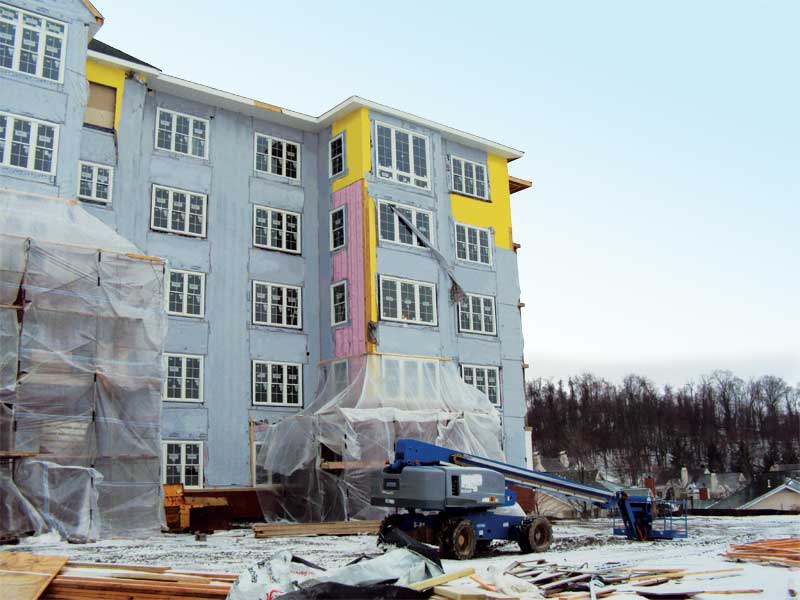Best practices for masonry wall systems and insulation

By Herbert Slone, RA, and Art Fox
Today’s high-performance building market is driven by increasingly stringent energy codes and a growing demand for greater building efficiency, sustainability, and affordability. This means specifying and building masonry cavity walls and adhered masonry walls with materials working together as a functioning system is more critical than ever. When designing a highly functional masonry wall, the list of wall system performance criteria an architect must consider is daunting.
The wall must provide thermal efficiency, often with several types of insulation. In addition, it must offer air resistance while also managing moisture with properly designed and placed water-resistive barriers (WRBs). Further, the assembly must resist water leakage. However, when water does get in, it must be able to drain out of the cavity or from behind the adhered masonry veneer.
Due to their porous nature, masonry cavity walls are considered ‘rainscreen walls,’ and are expected to allow water into the cavity. Therefore, they must be designed to allow drainage and drying. Modern building science has shown high-quality adhered masonry walls such as stucco, stone, and thin brick also need to include drainage. The wall should resist vapour permeation, but when vapour penetrates, it must be able to dry, even when wetting and drying conflict with each other.
Structural connections are required to securely hold the entire system together, and at least three different modes of fire resistance should be considered, with multiple product warranties managed with these modes. Architects must provide the contractor with a complete list of material and system specifications to ensure the project can
be bid accurately.
Contractors need to build with familiar, proven methods and readily available materials, and they should have complete installation knowledge of every component. When the project is complete, they must provide job closeout information such as credits earned under the Leadership in Energy and Environmental Design (LEED) program and warranty documents.
Sometimes, the architect specifies everything the right way and the contractor installs components the right way, but problems still wreak havoc or the finished building. This is not because the building materials were of poor quality or the contractor was incompetent, but because some products just simply do not work together. For example, if a thermoplastic polyolefin (TPO) flashing membrane is sealed with a polyether sealant—both of which
are tried-and-true, high-performance materials—the seal fails almost immediately. In order for the contractor to provide the best-quality construction, the architect must specify materials that have been tested and verified to be fully compatible and ensure plans are accurately detailed.
Architects can speed the design process, reduce risk, and help the contractor produce the best possible building by using complete wall assemblies consisting of components designed and documented to work together as a code-compliant system with full compatibility. These assemblies should also come with sequencing instructions making it clear how each component should be installed.


